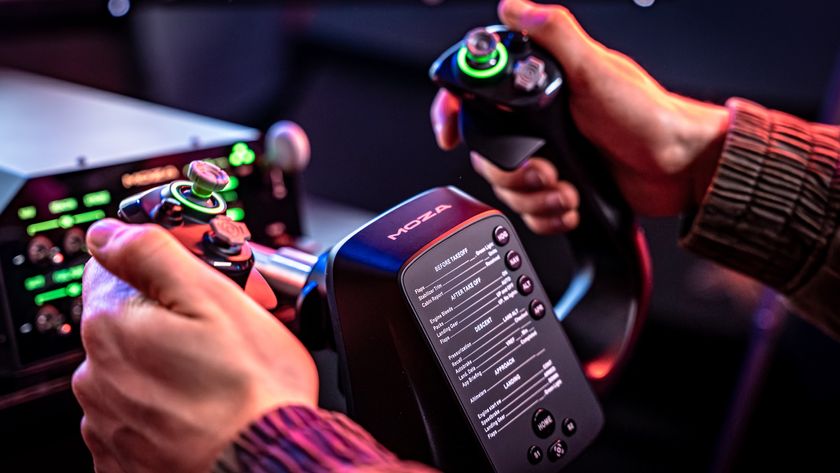
This week, science has managed to realise the frightening reality of a cyborg rat with Terminator-vision. Plus we might have finally discovered the appendix isn't quite as useless as we previously thought. Oh, and next time you get dumped, you can blame it on the oxytocin, all in another exciting week in science.
Terminator vision given to a rat One day we might be able to augment our bodies with upgrades like night-vision. Researchers have managed to plug-in an IR-camera into a rat's brain, allowing it to actually sense infrared light. It allowed the cyborg rats to find an IR light in a pitch-black room and activate a button, as if they could see it through a built-in sense. Real-life Terminator vision might be closer than you'd think. [New Scientist]
Oxytocin is the love drug that keeps us locked together Although we'd like to believe otherwise, the heart has nothing to do with love - it's all in the mind. Scientists have now found the hormonal cause of long-term love. Oxytocin is released as we fall in love and is imperative for a long-lasting relationship, enhancing communication, and acting a bit like nature's 'love glue'. So next time you get dumped, it probably wasn't you, it's a lack of oxytocin. [Scientific American]

Looks like that appendix isn't totally useless after all The appendix is apparently a very misunderstood organ. Previously thought to do absolutely nothing for us, just a leftover from when we used to eat grass, now researchers think they've found a purpose for the humble appendix. Apparently it could act as a 'safe harbour' for useful gut bacteria, protecting them from severe infection, allowing them to repopulate your gut when your immune system's managed to vanquish the enemy. A bit like an in-built Yakult, then. [Science]
Got diabetes? No problem Gene therapy isn't just the realm of science fiction anymore. Scientists have actually managed to cure dogs of diabetes with gene therapy. By using a virus, they injected two genes into the dogs' muscles: one to produce insulin, and one to control the amount of glucose absorbed into the muscle. Together they removed the need for the dogs to be injected with insulin, effectively curing diabetes in a large animal on a long-term basis for the first time. One day, this might be viable for human diabetes sufferers, getting rid of the need for constant insulin injections forever. [Diabetes]
It's life, Jim, but not as we know it Life has been found 800m under the artic ice, far deeper than sunlight can reach, and in incredibly cold temperatures. It's the first time microbes have been found in such a hostile condition, without even heat or iron-belching vents as a food source. The DNA sequences of the microbes and other facts about their survival are currently being probed, with the hope that they might give us clues as to whether life could arise on alien worlds like Jupiter's freezing moon, Europa. It just goes to show, life can thrive under almost any conditions. [Nature]

Liver cancer survival tripled by a genetically engineered virus The viral vector that helped us knock smallpox on the head is now being used to prolong the life of liver cancer sufferers. The modified vaccinia virus was able to shrink tumours in the liver, and any secondary tumours that formed, giving the patients simply mild flu-like symptoms. We've still got a long way to go, but the virus proved much more effective than the current best chemical treatments for liver cancer. It shows modified viruses might be our best hope against cancer and other difficult to cure diseases. [New Scientist]
Get daily insight, inspiration and deals in your inbox
Sign up for breaking news, reviews, opinion, top tech deals, and more.
A computer that will never crash A revolutionary new computer system, that can reprogram itself if it finds a fault, is now up and running at University College London. The computer, which mimics the chaos and randomness of real life, operates in a distributed, decentralised and probabilistic manner. It marries data to instructions and distributes the combined digital entities over various pools or "systems". Each system has context-sensitive data, which means it can only interact with other similar systems, executing in a pseudorandom order.
All the systems process their instructions simultaneously, with no one system taking priority. As multiple copies of the instructions are distributed across multiple systems, it means if one is broken it doesn't matter. The computer carries on, re-writing the broken code from fresh copies, in effect, making it uncrashable. It's designed to model the human brain and other natural processes, but it sounds like it could be incredibly useful to average Joe on the street. Imagine a world where there are no crashing computers to ruin your day. [New Scientist]

The first robotic eye goes on sale If turning rats into cyborgs wasn't enough for you, the first augmented sight system that partially restores sight in the human eye is going on sale in the US. The Argus II Retinal Prosthesis System uses a retinal implant in the eye, paired with a special set of glasses packing an integrated mini camera. It restores at least partial sight in those with retinitis pigmentosa, a genetic disease that destroys the photoreceptors in the eye leading to blindness. Next step, augmented reality injected directly into the eye. [DiscoveryNews]
















